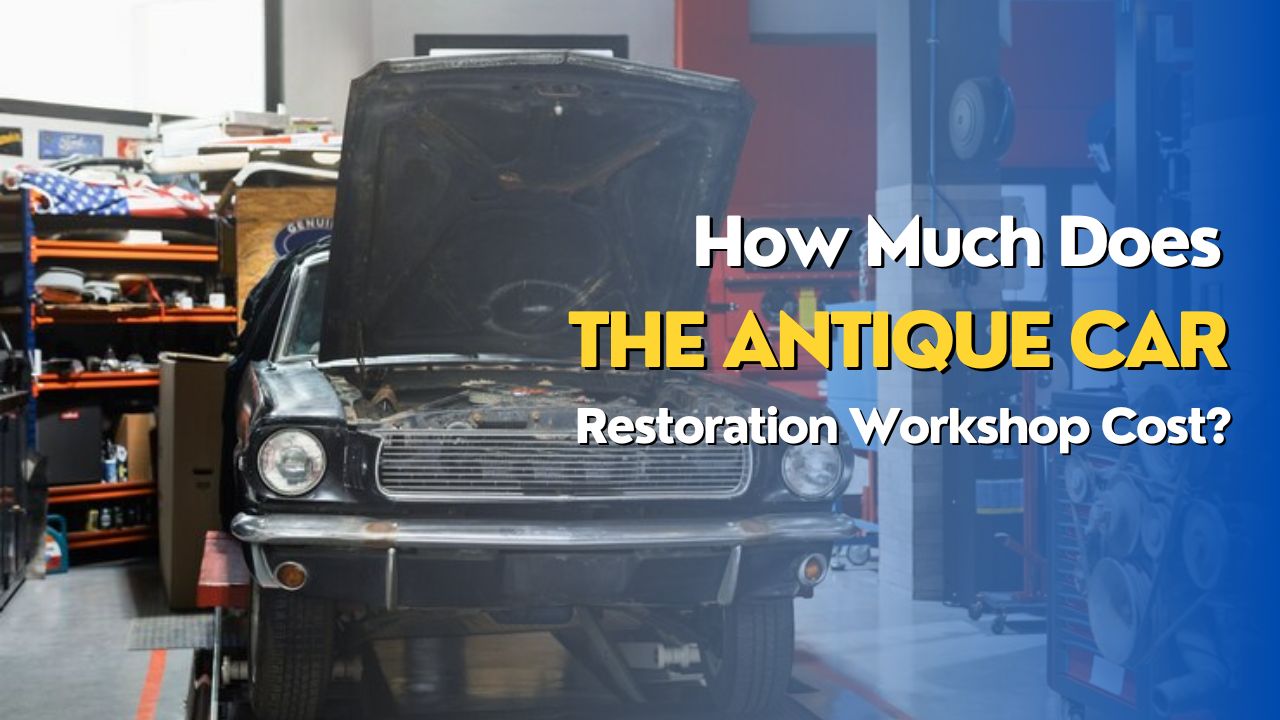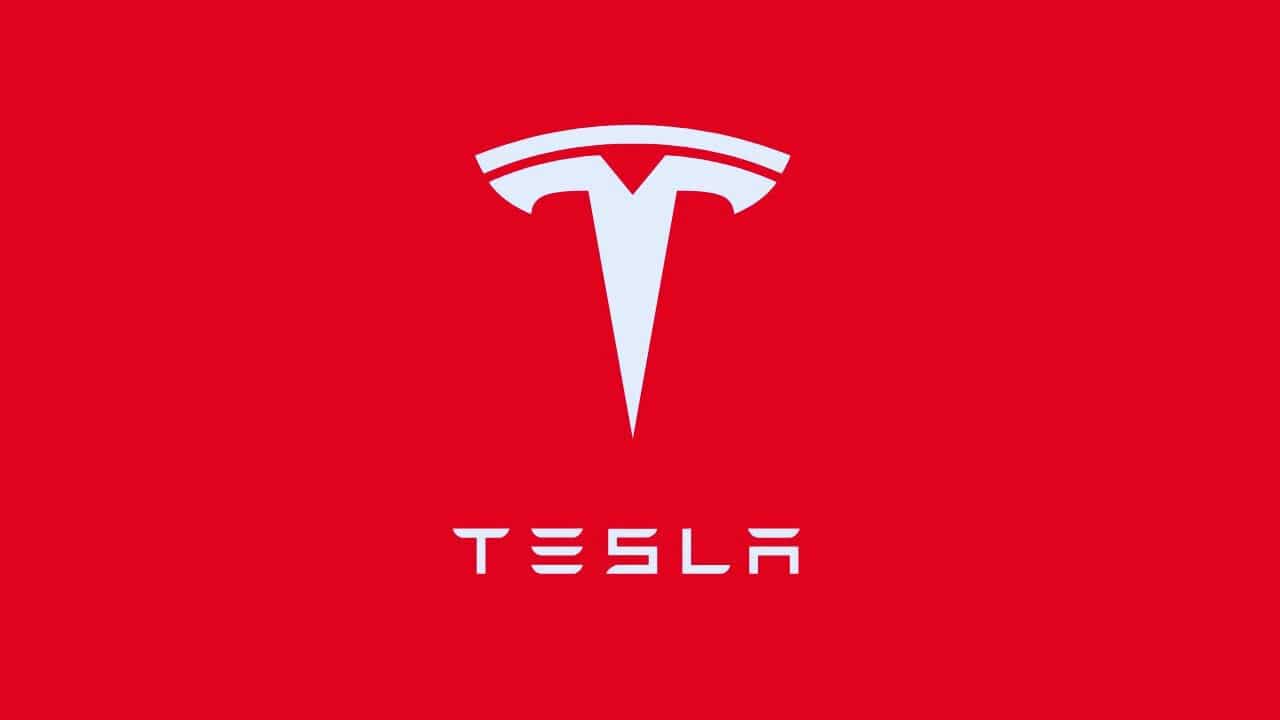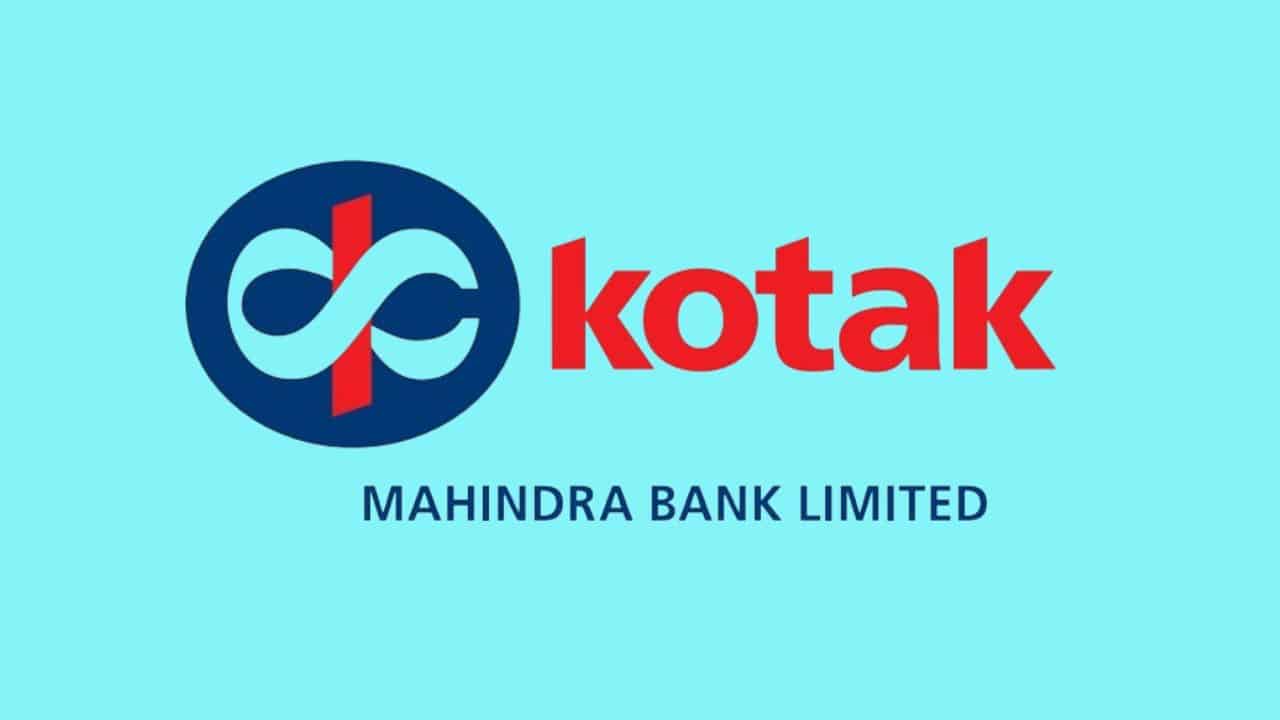Are you passionate about breathing new life into timeless treasures on four wheels? Antique car restoration is not just a hobby; it’s an art form that resurrects the glory of vintage automobiles. Explore all the details about antique car restoration workshop cost in this in-depth article.
Starting a specialized business, such as an antique car restoration workshop, presents unique challenges and costs that are key to success but can also seem overwhelming.
With startup expenses ranging from insurance at roughly $1,000–$3,000 annually to potential overall restoration costs hitting heights between $60,000 and $230,000, understanding the financial roadmap is crucial.
This article serves as your detailed guide through the maze of setting up shop in 2024—unlocking the secrets behind equipment investments, operational fees, and hidden gems of saving strategies.
Ready to fuel your passion with knowledge? Read on for insights that turn restorations into rewarding realities.
Content Highlights
- Starting an antique car restoration workshop can cost between $60,000 and $230,000. Ongoing costs include insurance, which costs about $1,000–$3,000 a year.
- Necessary equipment and supplies for restoring cars may total between $50,000 and over $100,000. Labor alone might be upwards of $70 per hour or more.
- To help with funding a restoration workshop, options like loans specifically for classic cars, crowdfunding up to $50,000, personal savings strategies, or available grants could be used.
- Keeping costs down is possible by doing some tasks yourself (DIY), buying refurbished parts instead of new ones, negotiating better prices on labor and parts, or researching multiple shops for the best rates.
- Opening a vintage car restoration business involves initial investments in space and tools, but also understanding future expenses like maintenance can help in planning financially.
Antique Car Restoration Workshop Cost: At a Glance
Check out the following table to learn briefly about the cost of an antique car restoration workshop.
|
Cost Category |
Estimated Cost Range |
Details |
|
Startup Expenses |
$60,000 – $230,000 |
Property, tools, lifts, and insurance |
|
Equipment and Supplies |
$50,000 – $100,000 |
Tools, equipment, and materials |
|
Retail Business Expenses |
Variable |
Property, inventory, marketing, software, website |
|
Software Expenses |
$5,000 – $50,000 |
Inventory, project tracking, accounting, and design software |
|
Inventory Expenses |
Variable |
Parts, materials, and supplies for restoration |
|
Advertising and Marketing |
~$10,000 per year |
Digital marketing, social media, SEO |
|
Website Costs |
$500 – $5,000+ |
Design, development, hosting, and SEO |
|
Insurance Costs |
$1,000–$3,000 per year |
Liability, workers’ compensation, environmental impact |
What is antique car restoration?
Antique car restoration is the process of repairing and refurbishing vintage vehicles to their original, or better, condition. The purpose of this meticulous work is to preserve the historical and cultural significance of these classic cars for future generations to appreciate and enjoy.
Definition
Antique car restoration brings old cars back to life. It’s fixing, painting, and changing out parts to make the car look like it did when it was new. This work aims to get a car as close as possible to its original state.
Experts use a 100-point system to tell how well a car is fixed up. A perfect score means the restoration is top-notch, while 20 or less shows that a car can’t be restored. Fixing up an old ride isn’t easy and doesn’t come cheap, often costing more than $1,000 just for repairs and tune-ups. In addition, you can also read an article on- Restoration Vs Customization – Which is Better for Your Classic Cars?
Purpose
Fixing up old cars is more than just making them look new again. It’s about keeping a piece of history alive. People who love cars find joy in bringing an antique car back to how it was when it first hit the road.
This hard work can make someone feel proud and happy because they have saved something special from the past.
Restoring vintage vehicles lets owners enjoy their beauty and power once more. They can drive a classic car that turns heads and starts conversations wherever they go, or keep it as a precious collectible.
Doing this kind of restoration also adds value to these old treasures, which is great if someone decides to sell them one day.
The Antique Car Restoration Workshop Cost in Detail
Starting an antique car restoration workshop can be a significant investment, requiring careful consideration of various expenses such as startup costs, equipment and supply purchases, retail business expenses, software fees, inventory expenses, advertising and marketing costs, website development expenses, and insurance costs. Keep reading to learn thoroughly about antique car restoration workshop cost.
Startup Expenses
Starting an antique car restoration workshop needs money at the beginning. You might spend between $60,000 and $230,000. This money goes to many things.
You need a place for your shop and tools to fix cars.
You also have to buy lifts for the vehicles, which can cost about $4,000 each with installation included. Plus, you must get insurance for your business; this could cost from $1,000 to $3,000 every year.
It’s important to not only think about how much money you need right now but also how much you’ll keep needing as your business grows.
Equipment and Supply Costs
When setting up an antique car restoration workshop, it’s essential to consider the costs of the necessary equipment and supplies. The estimated cost of purchasing the tools and equipment typically ranges from $50,000 to $100,000.
Raw materials and supplies for vintage car restoration projects can also cost anywhere from several thousand to tens of thousands of dollars.
These costs are crucial factors when budgeting for starting an antique car restoration workshop and should be carefully considered in the overall financial plan. Understanding these expenses upfront can help in making well-informed decisions throughout the setup process.
Retail Business Expenses
Starting a retail business for antique car restoration involves various expenses. These may include the costs of setting up a physical location, such as leasing or purchasing space, utility payments, and property insurance.
Additionally, you would need to consider the expenses related to acquiring inventory, marketing and advertising your services to attract customers, and investing in software systems to manage operations efficiently.
Furthermore, with the rising importance of online presence in today’s market, website development and maintenance costs are also part of your retail business expenses.
To achieve success in this venture while managing these expenditures effectively requires carefully planned budgeting that takes into account all potential costs associated with starting and running an antique car restoration workshop. Additionally, you can also read about- Top 25 Most Expensive Cars in the World in 2023
Software Expenses
The software expenses for managing inventory and tracking project expenses can vary from $5000 to $10,000 for a vintage car restoration workshop. Accounting and bookkeeping tools could also add an extra $300 to $500 per year for a small classic car restoration business.
Again, investing in specialized software for automotive design and restoration can cost between $10,00 and $50,000. These software investments are essential for efficient operations and streamlined management of the antique car restoration workshop.
Next up is “Inventory Expenses,” where we’ll delve into the costs associated with maintaining stock and supplies!
Inventory Expenses
When it comes to antique car restoration, inventory expenses play a crucial role in determining the overall cost. This includes the cost of acquiring the necessary parts and materials for restoring vintage vehicles.
From engine components to interior upholstery, every item needed for the restoration process contributes to inventory expenses. It’s essential to carefully plan and budget for these expenditures, as they directly impact the successful completion of each restoration project.
Antique car restoration workshops need various parts like gaskets, screws, bolts, primers, fabrics, and other supplies essential for refurbishing classic automobiles. These inventory costs are fundamental to ensuring that the workshop is well-equipped to handle different types of vintage cars effectively without encountering delays due to unavailable parts or materials.
Advertising and Marketing Costs
Advertising and marketing costs for an antique car restoration workshop are crucial to attracting customers. With a budget of around $10,000 per year, owners can create targeted advertising campaigns and leverage digital marketing strategies to reach the right audience.
This investment aims to maximize the return on investment by effectively positioning the business in a competitive automotive industry. By using social media platforms, search engine optimization (SEO), and targeted advertisements, shop owners can connect with potential customers who appreciate vintage cars’ authenticity.
Website Costs
Creating a website for your antique car restoration workshop can cost anywhere from $500 to $5,000, or even more. This includes expenses for web design, domain registration, hosting fees, and maintenance costs.
You may also need to budget for online marketing and SEO services to ensure your website reaches potential customers and stands out in a competitive market.
To attract more clients and showcase your expertise in antique car restoration, having a professional website is crucial. An interactive and user-friendly site can significantly enhance your online presence and help establish trust with potential customers.
Again, investing in search engine optimization (SEO) can improve visibility on search engines like Google, driving more traffic to your site. If you want you can also read- Top 15 Electric Mini Car for Adults in 2024 With Buyer’s Guide
Insurance Costs
Insurance is an essential expense for an antique car restoration workshop, with average costs ranging from $1,000 to $3,000. It’s crucial to have general liability insurance due to the risks associated with vintage auto restoration.
This coverage protects against liabilities related to mechanics’ work and potential environmental impact. Understanding these costs is vital for planning and budgeting accurately.
Antique car restoration workshops need insurance that covers various aspects, including employee-related risks, waste management compliance, and potential environmental impacts. By factoring in insurance costs when budgeting for restoration projects, workshop owners can ensure they are adequately covered while managing their overall expenses effectively.
Average Antique Car Restoration Workshop Cost
The average antique car restoration workshop cost can vary widely depending on factors such as the condition of the vehicle, parts costs, and labor rates. To learn more about how these factors affect the total cost and what you can expect to pay for a restoration project, keep reading!
Hourly Labor Rates
The average hourly labor rate for antique car restoration can range from $70 to $125/hour. Some specialty shops may charge even more per hour. As an example, it could cost around $125 per hour for frame straightening at specific workshops.
These costs play a significant role in the total expense of restoring antique cars.
Now let’s explore the total cost breakdown of restoring antique cars, including the factors and financing options involved in the process.
Total Cost Breakdown
The labor rates for antique car restoration can range from $70 to $150 per hour. For a full-blown restoration project, the total cost could reach up to around $60,000, $95,000, or even $230,000. This expense varies based on factors such as paint color and trim needs.
Parts costs can also significantly impact the total expenses; refurbished parts might help reduce the overall budget.
The accrued benefit cost method allocates units of benefits to each cost accounting period during car restoration. It’s important to consider not only the initial investment but also ongoing maintenance expenses when planning for an antique car restoration project.
Factors Affecting Antique Car Restoration Workshop Cost
Several factors can significantly impact the antique car restoration workshop cost, including the condition of the vehicle, parts costs, hidden problems that may arise during the restoration process, and labor costs.
These elements play a crucial role in determining the overall expense of restoring an antique car to its former glory.
Condition of the Vehicle
The condition of the vehicle plays a crucial role in determining the cost of restoring an antique car. The more extensive the damage or deterioration, the higher the restoration expenses tend to be.
Hidden problems such as rust, structural damage, or engine issues can significantly impact the overall costs involved in reviving an antique vehicle.
When considering an antique car for restoration, it’s important to carefully evaluate its condition and anticipate potential hidden problems that may arise during the restoration process.
Parts Costs
Parts costs play a significant role in the overall expenditure for antique car restoration. With an average expense of $10,000 on parts alone and additional labor charges, the total cost can escalate quickly.
The careful selection of parts suppliers and exploring options for refurbished components can help in managing this crucial aspect of antique car restoration expenses.
Let’s now delve into analyzing the factors affecting the cost of different parts and their impact on the overall restoration budget.
Hidden Problems
After considering the costs of parts for antique car restoration, it’s crucial to be aware of potential hidden problems. The process may uncover unforeseen issues such as rust damage, engine complications, or structural weaknesses that weren’t initially apparent.
These hidden problems can significantly impact the overall cost and timeline of the restoration project, requiring additional funds and time to rectify them.
Factors like existing wear and tear or previous repairs may lead to unexpected challenges during restoration, demanding a flexible budget and contingency plan. When buying an antique car for restoration, thorough inspections by experienced professionals are essential to identify these hidden issues before they escalate into costly setbacks and delays.
You May Find Interest: Latest List of 30 Fastest Charging Electric Car for Your Eco-Friendly Journey in 2024
Labor Costs
Labor costs for antique car restoration will largely depend on the expertise and experience of the mechanics involved. The average hourly labor charge for auto mechanics is upwards of $70 per hour, with classic car restoration potentially requiring tons of hours of labor at around $200 per hour.
These high rates are influenced by the specialized skills and attention to detail needed for vintage vehicle restoration, making it essential to carefully consider labor costs when budgeting for this undertaking.
Considering these substantial labor expenses, it’s crucial to factor them into your financial planning from the outset. Now let’s explore how different factors can affect these costs in greater detail as we delve into “Average Cost of Antique Car Restoration.”
Financing Options for Antique Car Restoration
When it comes to funding your antique car restoration workshop costs, you have several options available, including traditional loans, crowdfunding, personal savings, and grants. If you want to learn more about the best financing option for your restoration project, keep reading!
Traditional Loans
Traditional loans can be a challenge for antique car restoration workshops. While some lenders offer financing for vehicle restoration costs, securing an auto loan for classic cars might not be easy.
Few financial institutions provide specialized loans for vintage car restoration, and the process can be more complicated than obtaining a loan for a modern vehicle.
To obtain classic car financing, individuals should seek out lenders that specifically offer financing options tailored to classic cars. It may require additional effort compared to traditional auto loans, but it is essential to realizing the dream of restoring antique vehicles.
Crowdfunding
Unlike traditional loans, crowdfunding offers vintage car restoration businesses an alternative way to raise capital. This method allows borrowers to secure funding towards their vehicle restoration or modification costs for kit cars, hot rods, muscle cars, and more.
It’s a flexible and competitive finance solution that provides individuals with the opportunity to restore their vehicles to their full splendor. With crowdfunding, entrepreneurs can access up to $50,000 for their car restoration projects, making it an attractive option for those seeking financial support in the antique car restoration industry.
Personal Savings
Saving money from your regular income is a great way to fund your antique car restoration workshop. By setting aside a portion of your earnings each month, you can gradually accumulate the necessary funds for startup expenses, equipment and supply costs, as well as other financial needs related to establishing and running the workshop.
Researching various savings accounts can help you find options with high-interest rates, allowing your money to grow faster. It’s important to regularly review and adjust your budget to ensure that you’re consistently saving towards achieving your antique car restoration business goals.
Now let’s move on to exploring financing options that could help turn your dream of owning an antique car restoration workshop into a reality.
Grants
Grants can help with the costs of starting an antique car restoration workshop. Some organizations offer grants for hands-on training in vehicle restoration, especially for historically significant projects.
Considering seeking grant funding could provide financial support and resources to kickstart your antique car restoration business.
These grants can assist with startup expenses, equipment and supply costs, advertising and marketing, as well as insurance costs. By exploring grant opportunities, you may find valuable assistance that eases the financial burden of launching an antique car restoration workshop.
Tips for Reducing Antique Car Restoration Workshop Cost
When it comes to reducing antique car restoration workshop cost, there are several strategies you can employ. Consider DIY options for simpler tasks, negotiate prices with suppliers and service providers, buy refurbished parts when possible, and be sure to research different shops or professionals to find the best value for your money.
DIY Options
Restoring an antique car on your own can help you save money. Tasks like deep cleaning and scraping are DIY-friendly, reducing manual labor expenses. By taking on some of the restoration tasks yourself, you have the opportunity to cut down on overall costs significantly.
Many beginners find that a car restoration guide offers useful tips for DIY maintenance and repairs, making it easier to get started.
Now let’s explore how factors affect the cost of antique car restoration.
Negotiating Prices
Negotiating prices when restoring an antique car is crucial. Parts and labor can be expensive, so getting the best deal matters. You can negotiate with suppliers for lower parts costs, seek multiple quotes from restoration shops to get a competitive price, and don’t hesitate to discuss labor rates to ensure you’re getting the best value for your money.
By negotiating prices on parts and labor, you can significantly reduce the overall cost of antique car restoration without compromising on quality. It’s important to remember that negotiation is an essential skill for keeping expenses manageable while achieving exceptional results in your car restoration project. Additionally, you can also read about- How to Track Car Location by License Plate for Free [Tips and Tricks]
Buying Refurbished Parts
Refurbished parts offer a cost-effective solution for antique car restoration projects, allowing you to save money without compromising on quality. These parts undergo thorough inspection and repair, ensuring they meet industry standards.
By purchasing refurbished parts, you can access essential components at a lower price point, significantly reducing the overall restoration costs.
These parts are often sourced from vehicles that have been salvaged or deemed inoperable due to damage. However, through refurbishment processes, these components are restored to functional condition.
This presents a sustainable approach by giving new life to existing automotive parts while providing an affordable option for antique car restoration enthusiasts.
Researching Different Shops
When researching different shops for antique car restoration, it’s important to consider their expertise and reputation. Look for workshops with a track record of successful restorations and satisfied customers.
Also, compare quotes from different shops to find the best value for your restoration project. Don’t forget to inquire about any warranties or guarantees offered by the workshops, as this can provide extra peace of mind.
To make an informed decision, take the time to visit the workshops in person and observe their operations. This will give you a sense of their professionalism, cleanliness, and overall work environment.
Again, ask about the specific services they offer and whether they have experience working on your particular make and model of antique car.
The Importance of Proper Planning and Budgeting
Proper planning and budgeting are crucial for the success of an antique car restoration workshop. By creating a detailed budget, setting realistic expectations, and considering future maintenance costs, workshop owners can ensure that they have the necessary resources to complete projects on time and within budget.
This comprehensive approach also helps in managing expenses effectively and maximizing profits in the long run.
Creating a Detailed Budget
Creating a detailed budget is essential to accurately predicting all the costs involved in antique car restoration. It includes startup expenses, equipment and supply costs, retail business expenses, software expenses, inventory expenses, advertising and marketing costs, website costs, and insurance costs.
This thorough budgeting process allows for setting realistic financial goals and understanding the total investment required.
By carefully calculating the cost of antique car restoration with a detailed budget, you can avoid unexpected financial surprises down the road. It’s crucial to factor in every expense and create a realistic project budget to ensure smooth operations without facing any financial hurdles.
Setting Realistic Expectations
It’s important to be realistic about the costs of starting an antique car restoration workshop. Consider hidden expenses and factors affecting the restoration process. Understanding these aspects will help in setting achievable financial goals for the project.
With a clear understanding of cost factors, we can confidently plan for the future maintenance of restored cars, ensuring a sustainable business model and long-term success. Now, let’s delve into the potential benefits of antique car restoration to grasp its full potential impact on your investment journey.
Considering Future Maintenance Costs
In a comprehensive budget plan, it’s vital to look ahead and factor in future maintenance expenses. Anticipating the costs of maintaining antique cars after restoration is crucial for ensuring long-term satisfaction and financial viability.
By projecting these ongoing maintenance needs, workshop owners can adjust their budgets accordingly, aligning their resources with the demands of sustainable antique car care. This proactive approach fosters better preparation for inevitable upkeep requirements, ultimately enhancing customer trust and business stability.
Furthermore, considering future maintenance costs allows workshops to provide more accurate estimates to clients, thereby fostering transparency and reliability within the antique car restoration industry.
Potential Benefits of Antique Car Restoration
Restoring an antique car can be a deeply rewarding experience, offering a sense of personal satisfaction and pride in preserving automotive history. Additionally, it can serve as a financial investment with the potential for increased resale value in the future.
Personal Satisfaction
Restoring a classic car brings personal satisfaction and a sense of pride in preserving automotive history. It’s more than just fixing up an old car; it’s about reviving a piece of the past and experiencing the joy of bringing something beautiful back to life.
Enthusiasts find fulfillment in the process and take pride in seeing their hard work result in a restored antique car that exudes timeless charm.
The potential benefits of antique car restoration extend beyond turning wrenches and sanding down metal; it provides the opportunity to learn new skills, connect with like-minded individuals, and delve deep into automotive history.
Financial Investment
Restoring an antique car can be a significant financial investment, typically ranging from around $40,000 to $60,000, based on labor rates and the extent of restoration required. It’s crucial to factor in unexpected maintenance costs and ongoing expenses like storage and insurance.
While classic car restoration can yield a higher resale value, it’s important to carefully consider the overall financial commitment involved.
Proper budgeting and realistic expectations are essential for managing the financial aspects of antique car restoration. Additionally, understanding potential financing options such as traditional loans or personal savings can help make this unique investment more manageable for enthusiasts.
Increased Resale Value
Restoring a classic car could be a rewarding investment, appreciably enhancing its resale value. The authenticity and originality of the restoration work can significantly boost the vehicle’s worth, making it an appealing choice for potential buyers seeking a unique and well-maintained classic automobile.
Additionally, with proper documentation to showcase the authenticity of the restoration process, one can further elevate the car’s desirability in the eyes of collectors and enthusiasts.
This means that while antique car restoration may involve considerable costs upfront, it has the potential to yield substantial returns in terms of increased resale value down the road.
Takeaway
Restoring antique cars requires thorough planning and budgeting. The antique car restoration workshop cost involves various expenses, such as equipment, insurance, and marketing.
Factors affecting the cost include the condition of the vehicle and labor costs. It’s essential to explore financing options and consider ways to reduce restoration costs through DIY strategies or negotiating prices.
Proper planning is crucial to managing expenses and setting realistic expectations regarding future maintenance costs. Despite the financial investment, antique car restoration can bring personal satisfaction and increased resale value.
Frequently Asked Questions (FAQs)
If you have further queries about antique car restoration workshop cost, review these questions and answers.
1. Are there ways to make my workshop more energy-saving?
Sure! You can cut your overhead costs by using energy-efficient lighting, eco-friendly products, or installing equipment that saves energy.
2. Why should I train my workers in a car restoration workshop?
Well-trained employees do better auto repair, which makes customers happy. And learning about things like sustainability can also help them use materials that don’t hurt the environment.
3. What are some initial expenses when starting a car restoration business?
When you begin, you’ll need a place to work—the brick and mortar—and tools for automotive repair and routine maintenance on cars.
4. How do you restore an old car?
Restoring antique autos requires meticulous attention at each phase. Full disassembly exposes the body shell by removing all interior and exterior trim, glass, and fabrics. With the car stripped down, brake systems undergo inspection and upgrades for restored functionality, while metal elements receive protective cleaning and coatings. All paint and rust get eliminated from the bare metal before the reapplication of primer, color, and clearcoats. Engine blocks, heads, and internals get examined and refurbished as needed. Suspensions, electrical systems, and drivetrains go through repair to ensure proper operation. Finally, installing new safety add-ons like lighting, belts, and glass guarantees a roadworthy, restored classic.



































